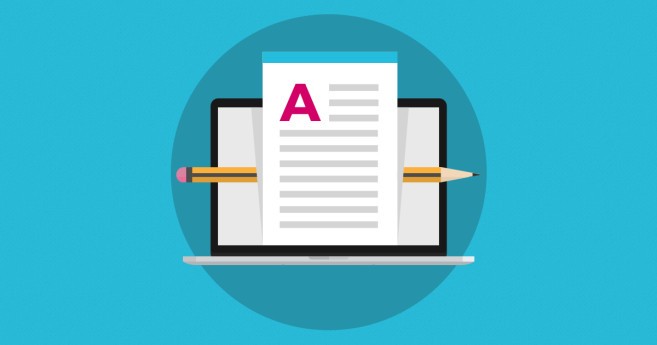“If you build it, they will come” – is not the best advice you could give to any blogger.
Even with the best content in the world, there’s no guarantee that the online audience will discover your blog. Quality writing is one of the most important factors that affect readership, but there are also several other reasons why people aren’t finding or reading your blog.
Without further ado, here are 17 of the most important reasons you may have overlooked:
1. You don’t know who you’re writing for
One of the most important steps in blogging is to identify your target audience. Doing so allows you to come up with relevant topics that can capture their interest, keep them engaged, and gain some recognition for your brand. After identifying your blog’s niche, make sure you develop detailed audience personas that describe their preferred content type, location, income, age, and so on.
2. Your content doesn’t match your brand’s identity

Before writing your very first blog post, you’ll have the decision to make – will you establish yourself as a serious, professional blogger or do you want to have a more humorous tone? Both works for certain types of audience personas. The key here is to be consistent as to avoid confusing your readers and followers. It also fosters familiarity and trust, which are crucial for sustaining a growing readership.
3. You don’t have a memorable personality
Aside from establishing your brand’s identity, you should also include your personality into every blog post. Remember that even serious bloggers push a distinctive personality in their writing. You can do it too by using genuine language, explaining topics from your perspective, inspiring certain emotions, and telling relatable stories about your brand.
4. You don’t pay attention to where your readers are coming from
Getting to know your audience is great if you want to provide them with relevant content. However, you also need to understand where they’re coming from to optimize the discoverability and click-through rate of your posts. For example, if you want to optimize your blog for search engines, make sure you know the keywords or search terms they commonly use. Knowing what your audience is looking for will allow you to write more compelling articles in the future.
5. You don’t have an editorial calendar

An editorial calendar ensures two things. One, it makes sure you publish posts on times when your target audience is most active. And two, it prevents you from running out of interesting topic ideas to cover. Y
6. Your content is shallow
A lot of bloggers who know little about a topic they’re writing about have the tendency to produce shallow or “thin” content. These are articles that offer information that can easily be found somewhere else. In fact, most of the information are probably scraped off from the first page of Google. If you actually want to provide value with your content, make sure you offer something fresh. You should also provide actionable tips to help your audience make the most out of your blog.
7. You write to promote
As a blogger, you must know that readers will always prioritize their gains. Unless you make it clear what’s in it for them, they will quickly lose interest in your blog. Sure, the occasional product or service promotion is acceptable, but you should focus on providing valuable content above all.
8. You don’t use images

According to statistics, using images is a great way to boost reader engagement and their capacity to retain the information they’ve learned. At the very least, you should use a featured image in your post to get your audience’s attention.
9. You use generic stock photos
Another thing to remember when using images is to avoid using cheesy stock photography. Apart from the fact that it may annoy some readers, you can get significantly more engagement if you use real photos to accompany your content.
10. You don’t give other content types a chance
Aside from your everyday blog article with a featured image, you should also explore other content types that can appeal to different readers. Using infographics, for example, makes your content more shareable in sites like Pinterest and Instagram.
11. Your post branches out to unrelated topics too much
Eliminating fluff in your writing is never easy, even for experienced bloggers. However, some take it to extremes by dedicating a paragraph or two for something that’s loosely related to the original topic. Although it’s okay to provide brief explanations for certain concepts that new readers may not understand, you should always try to stick to the topic throughout your piece.
12. You’re forgetting on-page SEO

On-page SEO encompasses everything on your website. Each post must be optimized for searchability and is weaved properly into your site’s internal linking structure. If you’re using WordPress, you can use a tool like Yoast SEO to get on-page SEO recommendations as you write.
13. Your writing doesn’t flow naturally
If you rely exclusively on the built-in spellcheck features of word processing applications, then you may overlook a few spelling and grammar mistakes in your articles. But even though you have perfect grammar and spelling, you may commit other errors that affect the reading experience of your audience. Try reading your work out loud to check if it flows naturally.
14. Your blog is not mobile-friendly
In 2015, Google announced that more search users are coming from mobile devices – overtaking those who use personal computers. So if your blog is still not optimized for smaller screens, then you might be putting off more than half of your target readers. Fortunately, most website builders and content management systems already offer responsive themes that adapt to any screen size. With a little investment, you can also hire a professional web developer to implement responsive design on your existing blog.
15. You’re unknown to popular influencers
Influencers can help build your authority, establish your credibility, and push your blog to a larger audience. They can also fuel your link-building efforts and help you rank higher in search engine results. So why aren’t you reaching out to them yet? But before you start, remember to develop a solid outreach strategy to get higher approval rates.
16. You don’t build a readership through email
An email list is one of the catalysts that solidify your relationship with your readers. It is a time-tested lead generation and nurturing channel that’s easy, cheap, and effective. However, you’ll need to work out your lead capture strategy from your website first.
17. You have a bad blog design

Finally, you need to look at your website’s design as a whole. If your website looks outdated, unprofessional, or simply uninspiring, then it’ll probably be very difficult for you to attract more readers. That said, you should consider using a different theme that fits publication-style websites such as a personal blog.
Conclusion
Successful blogging takes a lot more than just writing skills. With the list above, you should be able to identify flaws in the way you manage your blog. Work your way down to the bottom to make sure your readers have a reason to stay and subscribe.
Source: InspirationFeed
